Amomum villosum
Amomum villosum
1. The products in our compound library are selected from thousands of unique natural products; 2. It has the characteristics of diverse structure, diverse sources and wide coverage of activities; 3. Provide information on the activity of products from major journals, patents and research reports around the world, providing theoretical direction and research basis for further research and screening; 4. Free combination according to the type, source, target and disease of natural product; 5. The compound powder is placed in a covered tube and then discharged into a 10 x 10 cryostat; 6. Transport in ice pack or dry ice pack. Please store it at -20 °C as soon as possible after receiving the product, and use it as soon as possible after opening.
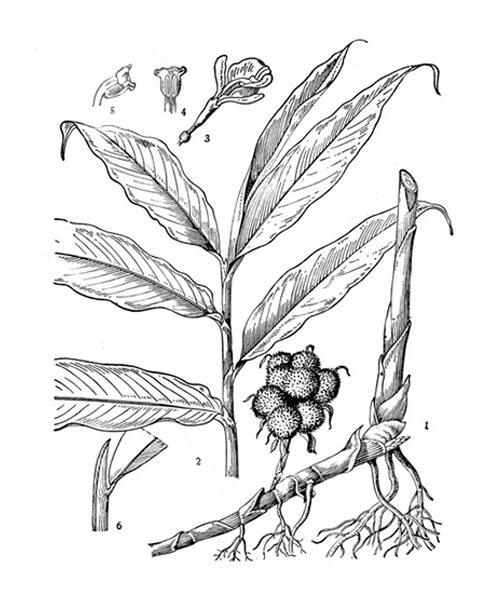
Natural products/compounds from Amomum villosum
- Cat.No. Product Name CAS Number COA
-
BCN6105
Vanillic acid121-34-6
Instructions
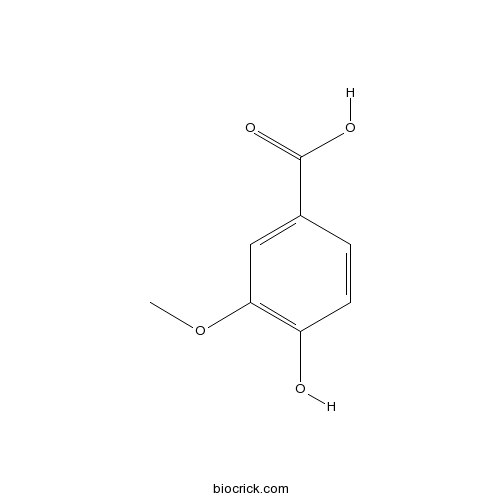
-
BCN8317
(+)-Bornyl acetate20347-65-3
Instructions
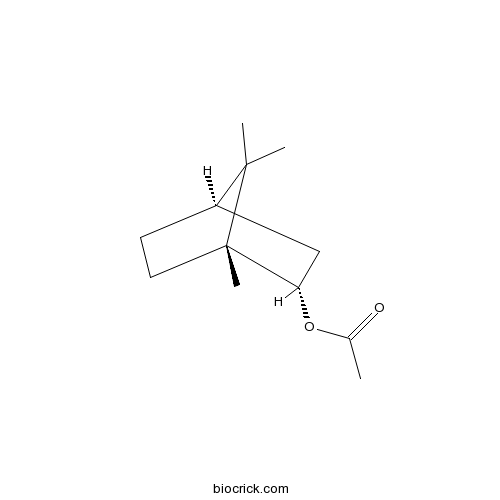
-
BCN5665
Quercitrin522-12-3
Instructions
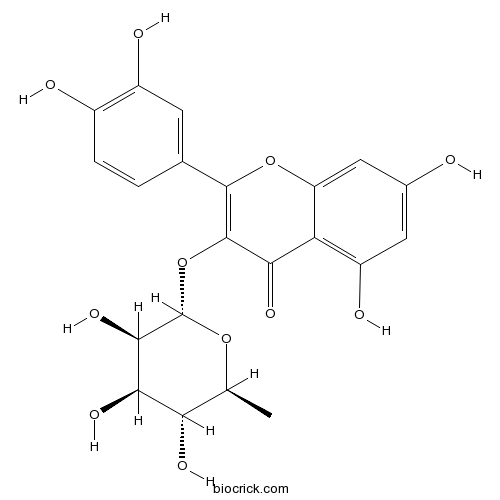
-
BCN8297
Camphor76-22-2
Instructions
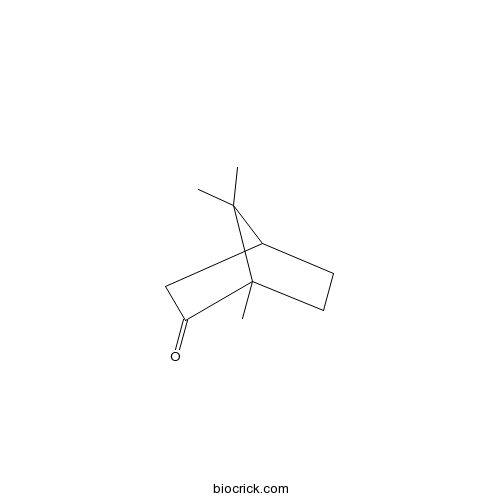
[Study on ecological stereoscopic cultivation mode of Amomum villosum-Dimocarpus longan].[Pubmed: 29552846]
In order to set up a technical standard for planting Amomum villosum in wood forest in the future, we analyzed the relationship between the ecological factors and the yield of A. villosum planted in five Dimocarpus imocarpus longan wood forests and five miscellaneous wood forests in Yangchun city, to find out the dominant factors that affect the yield of A. villosum. The results showed that agricultural measures of fertilization, artificial irrigation and removing the old plants were positively correlated with the yield of A. villosum, the pesticide spraying and soil pH value were negatively correlated with the yield of A. villosum. But the effects of ecological factors on the yield were not significantly. High yield regions are generally located in the ravine, two sides of mountain stream and other places where water is more adequate. The slope of cultivated field with high yield is generally less than 30°, lighting and ventilation are more appropriate; soil type is generally sandy or loam, shade density is generally about 50%, and pollinators are many in quantity and variety. And we found that there was a large difference in mineral nutrient contents of soils among ten plantations. Results indicate that the yield of A. villosum is determined by the combination of each ecological factor. Suitable light intensity, moisture, ventilation and reasonable fertilization are conductive to increase the yield of A. villosum, but the use of pesticides and soil alkalization hinder the increase of A. villosum production. Too high shade density and the abuse of pesticides may be the main reason for limiting the yield of A. villosum planted in D. longan wood forests. This study has obtained key techniques of the ecological stereoscopic cultivation mode of A. villosum-D. longan, which lays a theoretical foundation for the guidance of farmers in planting A. villosum in the D. Longan forest in the future.
RNA sequencing on Amomum villosum Lour. induced by MeJA identifies the genes of WRKY and terpene synthases involved in terpene biosynthesis.[Pubmed: 29338341]
Amomum villosum Lour. is an important Chinese medicinal plant that has diverse medicinal functions, and mainly contains volatile terpenes. This study aims to explore the WRKY transcription factors (TFs) and terpene synthase (TPS) unigenes that might be involved in terpene biosynthesis in A. villosum, and thus providing some new information on the regulation of terpenes in plants. RNA sequencing of A. villosum induced by methyl jasmonate (MeJA) revealed that the WRKY family was the second largest TF family in the transcriptome. Thirty-six complete WRKY domain sequences were expressed in response to MeJA. Further, six WRKY unigenes were highly correlated with eight deduced TPS unigenes. Ultimately, we combined the terpene abundance with the expression of candidate WRKY TFs and TPS unigenes to presume a possible model wherein AvWRKY61, AvWRKY28, and AvWRKY40 might coordinately trans-activate the AvNeoD promoter. We propose an approach to further investigate TF unigenes that might be involved in terpenoid biosynthesis, and identified four unigenes for further analyses.
Cardamom fruits as a green resource for facile synthesis of gold and silver nanoparticles and their biological applications.[Pubmed: 28290213]
Gold (FA-AuNps) and silver (FA-AgNps) nanoparticles were synthesized at room temperature by aqueous extract of dried fruits of Amomum villosum, also known as Fructus Amomi (cardamom), in order to confer antioxidant, catalytic, antimicrobial activities and treatment effect against breast cancer cells. Fruit extracts served as both reducing agents and stabilizers in lieu of chemical agents. Ultra-violet visible (UV-Vis) spectroscopy, field emission transmission electron microscopy (FE-TEM), energy-dispersive X-ray (EDX) spectroscopy, elemental mapping, X-ray powder diffraction (XRD), selected area electron diffraction (SAED), dynamic light scattering (DLS) and Fourier transform infrared (FTIR) spectroscopy were employed to characterize the biosynthesized nanoparticles. Both FA-AuNps and FA-AgNps exhibited free radical scavenging activity against 2,2-diphenyl-1-picrylhydrzyl (DPPH). Additionally, biosynthesized nanoparticles successfully reduced methylene blue, a well-known redox indicator. FA-AgNps showed zones of inhibition against pathogenic Staphylococcus aureus and Escherichia coli. Finally, the biological activities and cytotoxicity of nanoparticles were subsequently investigated in vitro. FA-AuNps demonstrated a potential cytotoxic agent against breast cancer cells as evaluated by MTT assay. The study highlights a rapid synthesis of FA-AuNps and FA-AgNps by dried Fructus Amomi aqueous extract and evaluates their potential biological applications on medical platforms.
[A New Pest of Amomum villosum in Xishuangbanna].[Pubmed: 27356373]
To report a new pest of Amomum villosum and its distribution, occurrence regularity and damage situation, in order to provide reference for its control.
[Quality of commercial Amomum villosum].[Pubmed: 28891607]
In recent years, with the price rise of Amomum villosum, the quality of A. villosum in the market has been in disorder. To understand the quality status of A. villosum in the market and provide reference for the commercial size fifty-seven samples were collected from different producing areas or markets from August 2013. The samples were detected with evaluation on appearance quality, determination of the contents of bornyl acetate, determination of pesticide residues and heavy metals residues based on Chinese Pharmacopoeia 2015. The results showed that the pesticide residues and heavy metals residues met the requirments, all the samples from different producing areas were qualified except one sample from Fujian province. The qualified rate of native products and imports products samples from market were 43.75% and 14.29%, respectively, the qualified rate of the samples of Yunnan province from producing areas was higher than that from the market. There are two ports at the national level in Yunnan province, where the southern herbs from. A. villosumis one of import medicines from Southeast Asia, and lots of A. villosum samples import to China from Yunnan ports. Most of pharmacists believed that all of the samples from Yunnan province produced in Yunnan. The great majority of commercial species was A. villosum, but A. longiliglare was scarce. Through the survey, it isfound that the main factors affecting the quality of Amomi Fructus was source, lots of A. villosum samples have been replaced by the Amomi Fructus, so the source of imports Amomi Fructus was not clear, which was also more difficult to identify. The quality of A. villosum needs to protect, optimize germplasm, strict control of medicinal sources, specification for medicinal harvesting and processing technology.


